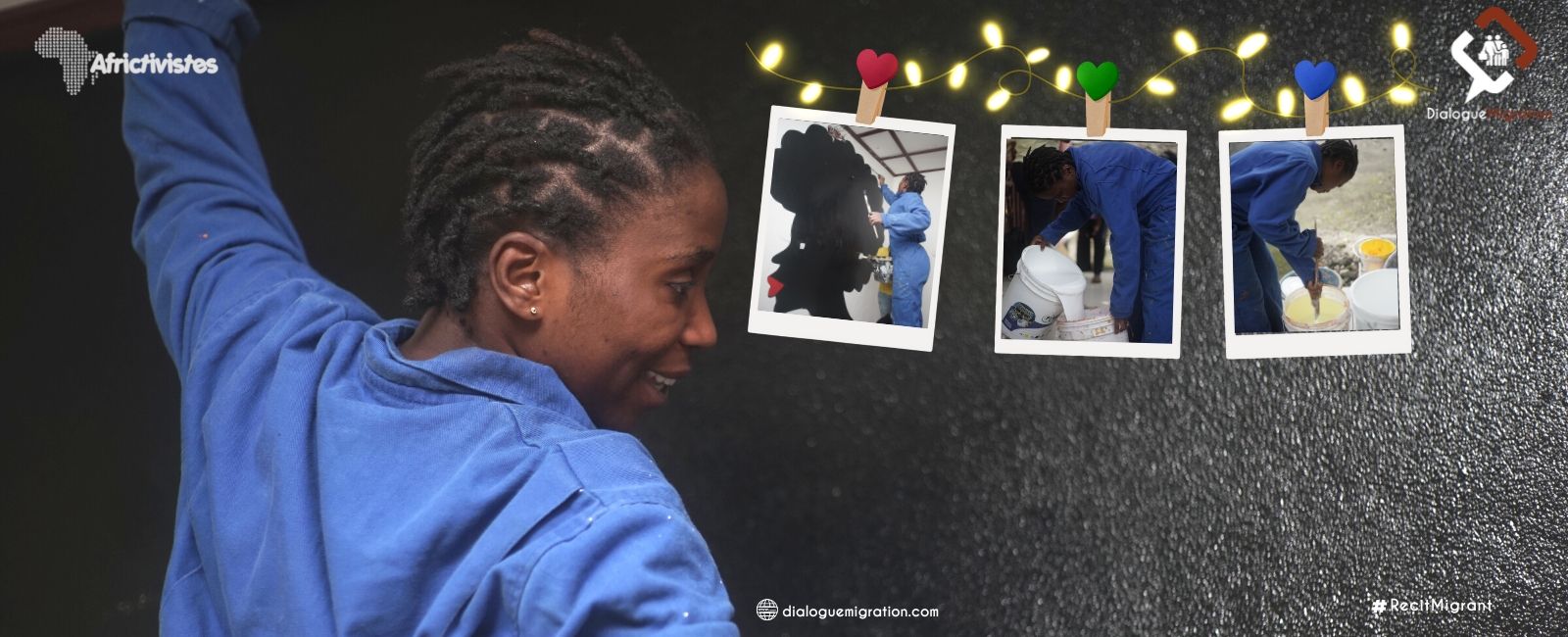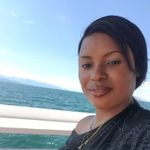

Have you ever been to Goma, the tourist capital of the Democratic Republic of Congo (DRC)? It is a city in the east of the country located on the northern shore of Lake Kivu at 1500 meters above sea level in the RIFT valley. It is the capital of North Kivu Province and has 18 neighborhoods. “Dialogue Migration” decided to drop anchor in one of its neighborhoods called Bujovu to meet Salima Sudi, a young painter and draftswoman. Coming from a family of ten children, this woman lives only from art. Through her magic brushes, she tells and sensitizes women through her works.
It is Friday, February 03, 2023, it is 7am and the sky hides the warning signs of a rainy day. Despite the gloomy climate, 25-year-old Salima Sudi starts her day with determination. Brushes in hand, dressed in overalls, this young girl from Bukavu with a serene look has only one objective, the same as the day before, to succeed in her life thanks to her drawings that speak for themselves. This single woman madly in love with drawing and painting agreed to speak to “Dialogue Migration”.
“Dialogue Migration”: Where does this passion for painting and drawing come from?
Salima Sudi: Since my childhood, I have always been passionate about drawing. My parents often remind me that when I was seven years old, I was already scribbling on paper and walls.
I have always tried to tell stories through images without anyone’s help. Growing up, I wanted to learn even more about my passion. That’s how I joined the Union of Young Artists Draftsmen and Painters (UJADEP). I trained for three years, before making a great encounter that changed my life. I had the chance to meet Mr. KAUSA, a renowned artist who at the time lived between Kigali (Rwanda) and Goma. I clung to him and he taught me a lot in my field.
Apart from Mr. KAUSA, are there any other people who have helped you develop your art?
Yes! I have worked with Americans and Europeans several times. Since 2014, I have collaborated with some local, national and international organizations but also with other artists from other African countries.
You lived in Bukavu, why did you choose to leave this city to settle in Goma?
Five years ago, I was living in Bukavu with my biological family. And life is too expensive in this city. I come from a family with an average income. My father had no contact to help me move forward. That’s why I decided to come and live in Goma to start my career as a painter and draftswoman.
Do you think your life today is better than the one you had in Bukavu?
Of course it is. Certainly in Bukavu I had a life, but professionally speaking I was too limited. I could not believe that drawing is a profession in its own and that it was possible to live from one’s passion. It was when I arrived in Goma that a cousin advised me to go and enroll at UJADEP to perfect my art and make it a profession. I was able to apply several times in competitions but I was not taken anywhere. Besides, I thought my family had been cursed somehow (Smile).
It was after my training that luck began to turn in my favor with mostly consulting contracts. Today, I don’t need to do anything other than drawing because thanks to my work I take care of my family.
What do you think overall about internal migration and the contribution it can have?
For me, migration is in itself a blessing. After my training at UJADEP, I had small contracts but I was not yet efficient in my work and I did not earn enough to support all my needs. Three years ago, I was supposed to deliver a comic book to a humanitarian organization about the non-exploitation of children in mining in eastern DRC. When I presented the first draft, the communication officer, thanks to his comments, guided me and taught me a lot about painting and drawing. Thanks to him, there is more art in my drawings. So migration is also about knowledge exchange and capacity building.
What are your specializations in the arts and crafts?
I know a wide range of them in the arts and crafts and particularly plastic art. I also make comics, picture boxes, paintings, postcards, collages,… In the field of crafts, I make jewelry.
Why are you directed towards a profession known as difficult because it is considered a male profession?
This is first of all a matter of divine order. It is a gift to me. Those who think that there are jobs designed for men or women are mistaken. They need to know that we all have a gift. Now it’s up to us to harness that talent to make a living. Every March 8, the world celebrates the emancipation of women. But, when we see the woman out of the ordinary, why shout? (Nodding)
You represent women more than men in your drawings, why?
I convey messages through my drawings. Every December, organizations do awareness-raising activities for the 16 Days of Activism Against Gender-Based Violence, but nothing changes. Women are always raped, they are killed… That is why I am trying to do my best and maybe from my drawings will come out a solution against violence against women in my country.
Women are really not taken into account and are marginalized in almost all areas of social life.
Through my art, I convey the message that women should not be underestimated and should be included in all problem-solving bodies in society.





